On a birthday trip to Newfoundland; lunar landscapes, one-pound lobster, and a lively house party provide keen memories. Plus: Celebration Traveler Guide National Parks: Newfoundland, Canada.
by Donna Peck
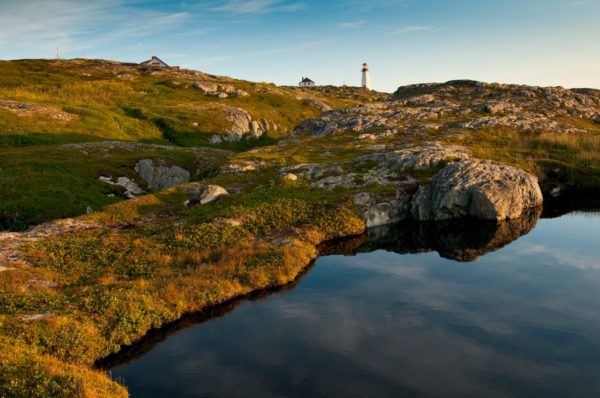
One of the best places to celebrate a new decade in your life is Newfoundland. In terms of age, nothing can top this North Atlantic island for its multi-billion-year history.
Evidence of the earth’s long, eventful lifespan is on view throughout the 140-mile length of Newfoundland’s Great Northern Peninsula. Summer tourists ogle the geological and archeological wonders. Red boulders ejected from the earth’s mantle lay strewn across a vast plateau. Ancient cliffs soar 2,000 feet above a rare landlocked fjord. At the peninsula’s tip, a chance discovery brought a Viking settlement to light. Even to the casual visitor, the landscape gives up its stories with rare generosity.
Gros Morne National Park south
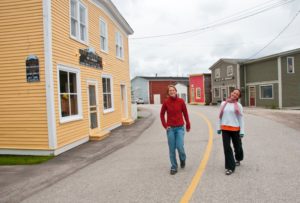
Since my friend was celebrating a decade birthday, and I have Viking blood in my veins, Newfoundland called to both of us. After a short flight from Halifax, we landed in Deer Lake for a 7-day excursion that began at Gros Morne National Park. Behind the Discovery Centre, a trail meandered up to a popular overlook. The scarlet-red partridgeberries puckered our lips but attracted the ptarmigans who foraged on the hillside. Reaching the summit, we counted a dozen tiny villages strung along the shoreline of Bonne Bay. Gros Morne Mountain, a remnant of a mountain range that rose 1.2 billion years ago, dominated the far shore.
The downhill climb put us in mind for an old-fashioned Newfoundland scuff (the local term for a large meal late in the day). In Woody Point, the Old Loft Restaurant serves fresh seafood from the North Atlantic and the Gulf of St. Lawrence. On the deck, someone shouted, “Whales,” and the dining room emptied in a flash. A pod of sleek Minke whales had chased fish into the bay. An eagle swooped low, watchful and alert, also on the hunt. We came back to a table filled with frothing mugs of beer and large portions of grilled halibut and baked codfish.
Red Mantle Lodge, a hillside aerie above Bonne Bay, was designed for nature lovers. Its spacious deck became our favorite perch for watching clouds scuttle across the sky and for pondering the unending march of time.
The next morning on Green Gardens trail, sunlight broke through the clouds onto a red wasteland, strewn with oxen-size boulders. After a mile, the trail descended into a dense pine forest then out onto a green meadow. Our arrival startled a herd of sheep, colliding in a mad panic (very amusing), clearing the way to a wooden staircase at the bluff’s edge. The rocky cove below was filled with promise.
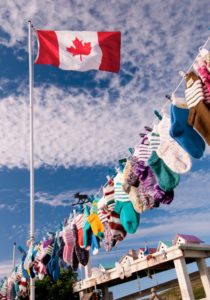
Inside the sea caves, sculpted domes showed the artistry of water. The echoing boom of the tide showed its menace. We waded out through frigid water to the largest sea stack and scampered up. Atop our anchor in the roiling sea, we passed a tranquil hour musing on life, both general and personal.
That afternoon, we hiked the Tablelands trail, crossing a barren plateau, our voices barely above a whisper. The fiery red rocks—cast up by a continent-shaping cataclysm—possess an otherworldly beauty.
Exertions over for the day, we imagined hearing the dinner bell ring a mile away in Trout River. After a short drive, the gulf’s prettiest pastel-colored village loomed into view. Red geraniums bloomed in window boxes; and rainbow-colored mittens, socks and quilts flapped on clotheslines outside knitters’ cottages. The Seafood Restaurant draws people from all over the peninsula for its huge platters of mussels, fresh-cracked crab and one-pound lobster. My friend was wearing that look that said, “This is a one-pound lobster day.” Inside business was bustling, but we soon had bibs tucked over our collars and were elbow-deep in fresh cracked lobster.
Gros Morne National Park north
Our escalating interest in Gros Morne’s geologic wonders brought us the next day to Green Point beach. Huddled around a park ranger, we stood on shale that came from the Iapetus Ocean. “If I said that to a group of geologists,” said ranger Penny McIssac, “I would be telling them to calm down.” An eel fossil found on the shale made the beach a must-see destination for scientists. It provided a missing link in the story of how life evolved on earth. I fingered the rock with more reverence.
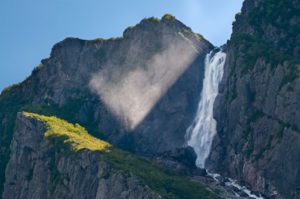
Western Brook Pond—the park’s famed Ice Age attraction—is a lake at the end of a 45-minute hike through forest and bog. The word bog doesn’t do it justice. Thousands of insects buzz in the scintillating air above a botanic Shangri-La, a wet meadow carpeted with aquatic plants in shades of yellow, pink and purple.
The trail ended at crystalline blue Western Brook Pond, a lake steamer bobbing at the dock. Cruising at 8 knots, the boat slipped through a notch in the rock wall and entered a landlocked fjord. A hundred passengers arched their necks at the hanging valleys, waterfalls and 2,000-foot-high cliffs. “There’s the tin man,” announced the guide, directing our gaze to a section of fissured rock that resembled the Wizard of Oz character.
Forty ice rivers, we learned, flowed into this valley from the upper plateau: the first one 2.5 million years ago. To demonstrate the earth’s immense age, the guide instructed us to stretch out our arms. “If you pretend the span of your arms measures the earth’s entire existence,” he said, “the last Ice Age 11,000 years ago is a speck of dust on your fingertip.”
North Coast
Driving forward in time, we pulled into L’Anse aux Meadows. A thousand years ago, Vikings sailed down from the cold north, brought by an unexpected storm and heroic seamanship. According to an Icelandic saga, Leif Ericson drank the dew from the grass and declared it “the sweetest I ever tasted.” The excavations at L’Anse aux Meadows in the 1960s revealed enough artifacts to fashion a true-to-life replica of the Viking settlement.
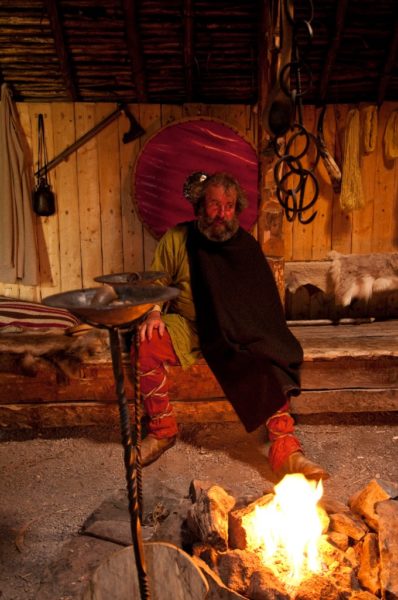
Inside a recreated turf house, a young self-styled “Freya” wove cloth with a twig shuttle. She stayed in character, instructing the “new arrivals” on how to spin wool with a spindle like one excavated at the site. In the dining hall, we met “Bjorn” the navigator, busy with a flint box. He invited us to a storytelling session around the fire. “Leif found wild grapes when he was exploring the Bay of Fundy,” Bjorn said, “so we call our colony Vinlania,” hoisting his wine skin with a mighty guffaw.
The Moment
Like my Viking ancestors, I wouldn’t feel adventurous without a few days cut off from civilization. Taking the skiff out to Quirpon Island, we joined ten other guests at Quirpon Lighthouse Inn, anchored above the pounding North Atlantic. The island is deserted except during the brief summer when laughter issues from the open windows of the lightkeeper’s two-story home.
The staff welcomed us with a Jigg’s dinner; a home cooked meal of dumplings with molasses, carrots, cabbage, salt beef, boiled potatoes and cream-puff blueberry pie. After dinner, the cooks pulled chairs into a circle and brought out fiddles, accordions and an ugly stick (a mop handle decorated with bottle caps and bits of scrap metal). We stomped our feet, pounded the ugly stick on the floor in time to Newfie sea chanteys and ballads.
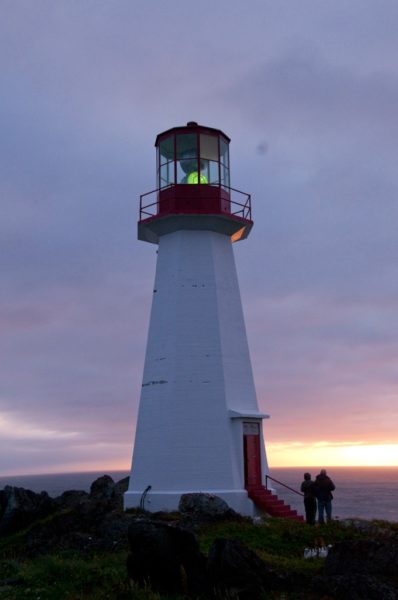
After midnight, the pounding on my bedroom window was not so merry. Rain hammered angry fists and the heaving waves sounded unnervingly close. I recalled the tunes from the kitchen party, then went to sleep, certain the house had withstood much worse.
The next morning, high winds canceled our kayaking trip. So our host sent us out with plastic bags to forage for bakeapple (cloudberries). In the mossy headlands, we found the remains of a sod hut. Farther on, headstones protruded. The tiny cemetery fence protects the graves of a French captain and his family. No traces of the village remain. In the last century, Quirpon (rhymes with harpoon) was deemed “barren and unprofitable.”
Back on the mainland, we shopped in St. Lunaire-Griquet for souvenirs. At the Dark Tickle Company store, I picked out a miniature Inushuk, a figurine of stacked stones like the stone markers that the Inuits erected for fellow travelers. It encapsulates my purpose in traveling. A good trip leaves you feeling like you’ve just begun and that many more lie before you.
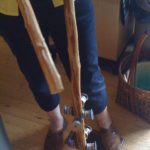
by Donna Peck
Donna learned how to beat an ugly stick in Newfoundland.
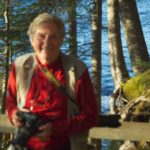
Photography: Steve Bly
Steve got up before daybreak to photograph Newfoundland’s iconic sights.
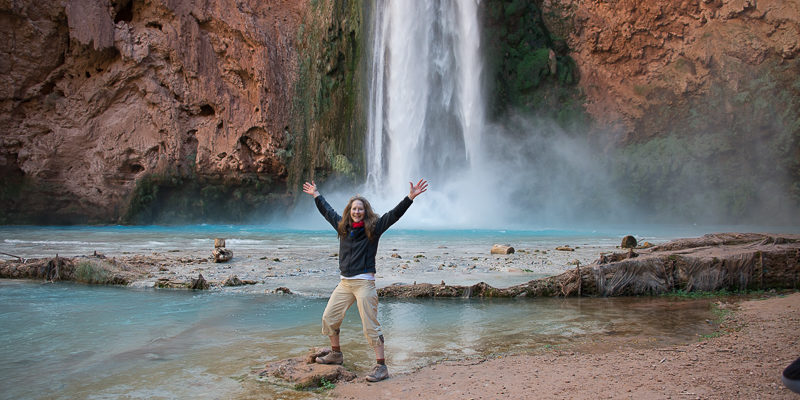
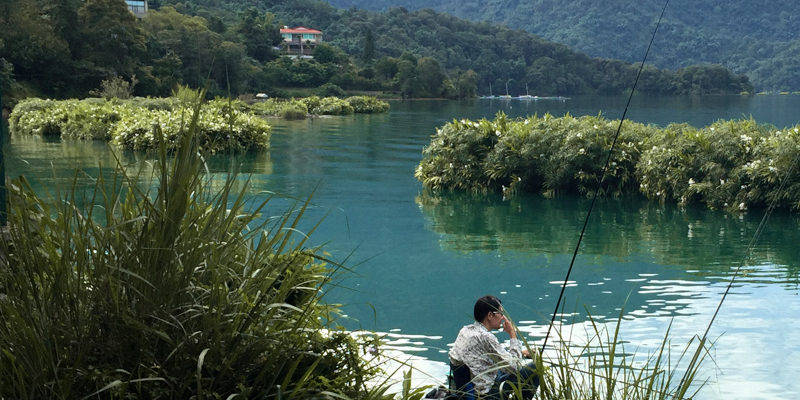
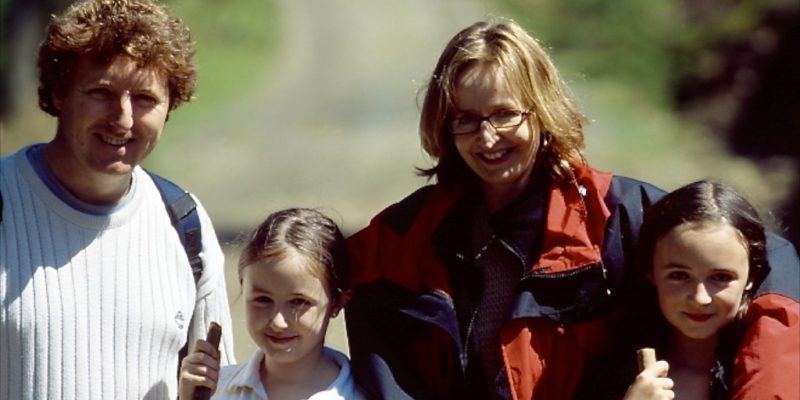

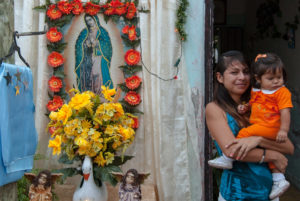
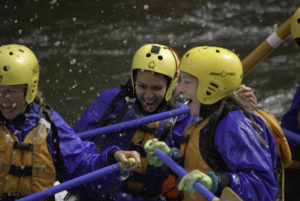
Leave a Reply